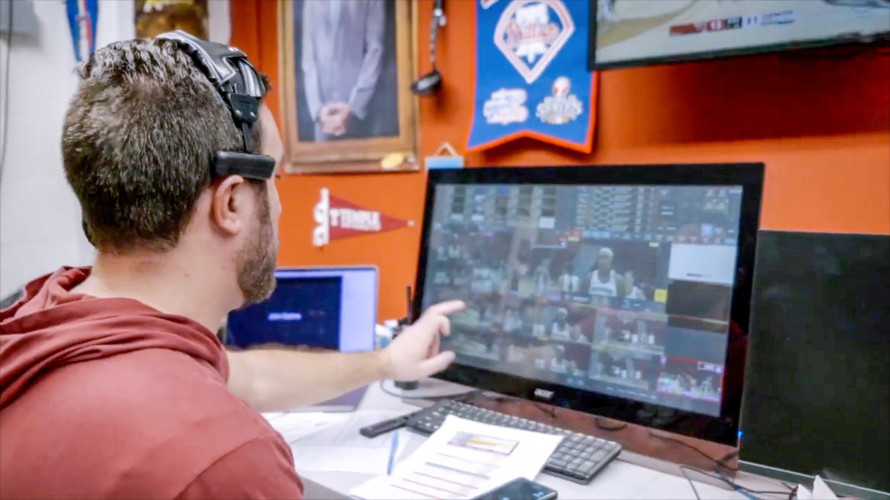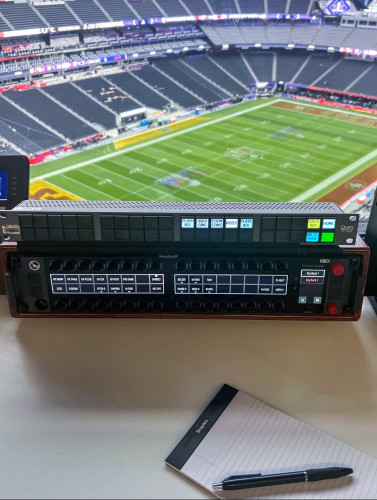by Steve Nunney
Issue 83 - November 2013 We have only recently started to get HDTV transmitted to our homes with all the headaches of getting 1920 x 1080 50 or 60 fps down cables and compressed over the airways. Then there was the suggestion we could be sitting at home wearing glasses watching 3D however on 13th June 2013, ESPN announced an end to broadcasting their 3D channel before the end of the year.
So what is the next biggest and greatest home viewing development we should expect? 4k and quickly following on its heels is 8k. Is someone testing our patience?
But what is 4k?
4k has twice the horizontal and vertical resolution of the HDTV format 1080p (which qualifies as 2k), with four times as many pixels overall. It has a resolution of 4096 2160 (8.8 megapixels ) in the professional world and in the commercial arena it will be known as "Ultra High-Definition", or "Ultra HD". It would be used with displays that have an aspect ratio of at least 16:9 with at least one digital input capable of carrying and showing video at a minimum resolution of 3,840 2,160 pixels. (8.3 megapixels). Using the horizontal resolution to define the format is a change from the previous video types, which are defined according to vertical resolution.
On 23rd August 2012 ITU-R Recommendation BT.2020 (also known as Rec. 2020) was released. Rec. 2020 defines various aspects of ultra high definition television such as display resolution, frame rate, chrominance sub-sampling, colour depth and colour space (In coverage of the CIE 1931 colour space, Rec. 2020 colour space covers 75.8%, digital cinema covers 53.6%, the Adobe RGB colour space covers 52.1% and Rec. 709 covers 35.9%).
Rec. 2020 allows for Ultra HDTV frame rates of 120p, 60p, 59.94p, 50p, 30p, 29.97p, 25p, 24p, and 23.976p with a colour depth of 10-bits or 12-bits. To send video around the studio before transmission the 3G SDI interface on a single coax cable (or 2 cables in some cases for 4:4:4) was used to send UHDTV around would require at least 6G SDI (5.94 Gbps ) or even 12G SDI (if 4:4:4 12bit 4k format is required, then 48G SDI has been mentioned) which introduces many more complex problems, least of which being whether fibre should be used instead of coax. There is no formal standard for an interface above 3G SDI so proprietary interfaces are being produced to fill the gap, which could cause serious interoperability issues in the future.
Existing broadcasters infrastructure have only recently been upgraded to 3G SDI with an ROI of 10 to 15 years it would be unlikely that another change so quickly would be acceptable especially with further upgrade to the bandwidths for 8k just around the corner. One possible solution would be to use the existing 3G SDI backbone, but using 4 cables per 4k channel brings its own problems. Indeed, who is pushing whom for higher resolutions?
The home viewer have their own problems with how to watch 4k the latest LED TVs now have the capability to show the pictures, but the STBs are not likely to be available until end 2014. With full broadcasts not available until 2015 to 2016 and no plans for a Blu-ray UHDTV version and with HDMI v2.0 only announced in September 2013 which is capable of supporting 4k 60Hz, it probably means a new powerful PC so that videos can be downloaded and watched as the main way to see 4k for a while.(YouTube already allows a maximum upload resolution of 4096 3072 (12.6 megapixels) but a 15Mb/s steady bandwidth is required to stream 4k to a PC, which will probably need a fibre to the home connection). Strangely the Japanese public broadcaster, NHK, has suggested that 4k may not be good for the general public to use at close range, the fast moving images of an 4k signal on a minimum 60 screen could cause nausea and confusion for its viewers! To get the huge amounts of video data to the home, (a 15 second clip in mp4 of mobile and calendar gives a 57Mbytes file whilst a clip in 4k gives a file of 1.2Gbytes) compression will most probably be required H264 with 2 of the 17 levels available to support 4k is already (even though it is only just getting to the home being used in HD STBs and built into some TVs) reaching its limits such that H265 published early 2013 has already started to be tested with its 13 levels, 6 of which support 4k and is said to double the data compression compared to H.264 at the same level of video quality.
In the meantime the Hamlet range caters for those requiring current HD formats of 3G, HD and SD SDi and backwards compatibility for component and composite video signals plus embedded, AES/EBU and analogue audio with Dolby and Loudness features. The latest edition to our range, the DigiTek DT900 and the DigiScope DS900G which was awarded the highest honour of a Star Award at IBC in recognition of its technological innovation, join the award winning DigiScope DS900, MicroFlex and VidScope.
Hamlet, the inventors of on-screen test and measurement, strive to provide instruments for real world operations of programme production and front line maintenance. 4K and 8K solutions are being developed enabling our users to attain excellence in their vision and audio for years into the future!
So bear in mind that 4k with its double the number of line and pixels will give the viewer a far better picture viewing experience, but due to the large bandwidths required to move the data around will cause infrastructures to be severely stressed if not upgraded, so monitoring waveforms and eye diagrams for timing will become even more important to the broadcaster.
Powerful PCs with the new interfaces and huge amounts of storage will be required for file based manipulations of the video with much analysis of conformance to all the colour space and gamut requirements especially if being recorded in 4k and transmitted down to HD and SD. The home viewer will potentially also need a large outlay for the fibre to the home connection TV and STB. Especially with 8k already being trialled, will 4k meet the same fate as 3D?
A testing 4K future...

Author: Steve Nunney
Published 1st December 2013



































